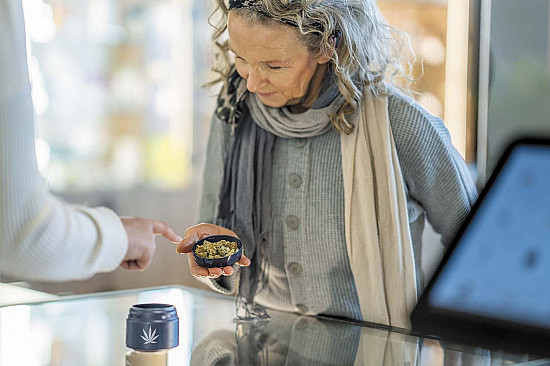How “inflammaging” shapes our health
Inflammation is at the root of many chronic diseases — ranging from heart disease to memory loss — that crop up as we get older. But you can push back.
- Reviewed by Toni Golen, MD, Editor in Chief, Harvard Women's Health Watch; Editorial Advisory Board Member, Harvard Health Publishing; Contributor

Maybe you head out for a brisk walk instead of watching yet another episode of your favorite show, munch on a handful of unsalted nuts in lieu of diving into a bag of chips, or opt for an early bedtime rather than scrolling on your phone.
You may not realize it, but these seemingly small, healthy lifestyle choices can keep inflammation in check, whereas the alternatives might stir up “inflammaging.” A term coined in the year 2000, inflammaging is defined as chronic, low-grade inflammation throughout the body that occurs with aging. But our daily habits are a big part of the equation.
It’s difficult to overstate the role inflammation plays in our health. Estimated to affect 35% of American adults, chronic inflammation accelerates aging and contributes to more than half of all deaths worldwide by driving various age-related diseases, according to a study in Nature Medicine.
But it’s not inevitable, says Carlos Donado, an immunologist in the Rheumatology, Inflammation, and Immunity Division at Harvard-affiliated Brigham and Women’s Hospital. “Most people know about certain foods and lifestyle changes that can slow down aging, but they aren’t aware that a major culprit and critical risk factor for a lot of age-related illnesses is inflammation,” he says.
How it evolves
To be clear, inflammation is a normal, protective part of the immune response. It’s how the body reacts in the short term to injury or infection to help the body heal — prompting redness and swelling from a twisted ankle, for example, or aches and sneezes that characterize the flu.
But as we get older, our immune system isn’t as efficient at tamping down excess inflammation, which silently damages cells. Aging itself is associated with this cell damage, Donado says, but research on people who’ve achieved extreme longevity suggests many other factors at play.
“Many centenarians show lower levels of inflammaging that are also balanced or counteracted by robust anti-inflammatory responses,” he says. “Part of the reason they survive a very long time is they don’t accumulate that cell damage at the levels others do.”
Donado ascribes inflammaging, in large part, to “poor patterns of sleep, decreased levels of physical activity, and a poor diet. All of these together can increase the levels of damaged cells and tissues.”
Ripple effects on health
Inflammaging is linked to the development of a wide array of age-related diseases, including
- arthritis
- cardiovascular disease
- diabetes
- cancer
- Alzheimer’s disease
- autoimmune diseases.
Notably, inflammaging is also a silent force behind age-related decline, making you look and feel older than your years. Chronic inflammation can contribute to frailty, which affects 25% of people over 80 and is marked by weakness, fatigue, unintentional weight loss, and slower walking speed.
“It can certainly make you look older and feel more tired and lethargic,” Donado says.
The promise of “gerotherapies”
The first anti-inflammatory drug, aspirin, was introduced at the turn of the 20th century. About 60 years later, it was followed by nonsteroidal anti-inflammatory drugs (NSAIDs) such as ibuprofen, that we commonly take for headaches, arthritis, and other types of pain.
But it’s not prudent to use over-the-counter NSAIDs to stem chronic inflammation, Donado warns. Taking these drugs on a regular basis can lead to dangerous side effects, such as gastrointestinal bleeding.
“It’s also very difficult to say how they would affect people, because so many factors can affect inflammaging,” he says. “We need precision medicines and research to determine which would benefit one person versus another.”
Scientists are now working to develop “gerotherapies,” medications that can counteract inflammaging and in turn, promote longevity, Donado says. Doctors are also now able to gauge systemic inflammation levels with a blood test measuring biomarkers such as C-reactive protein; tumor necrosis factor (TNF); and interleukin (IL)-1 and IL-6, inflammation-related messengers in the immune system.
These foods fight inflammationWhen it comes to eating the types of foods that can curb inflammation, it seems most Americans are swimming upstream. Indeed, nearly six in 10 U.S. residents consume pro-inflammatory diets, which regularly include items such as processed meats, sugary snacks, and fried or fast foods, according to a study of nearly 35,000 adults (average age 48, 51% women) published online Sept. 27, 2024, by Public Health Nutrition. “You should certainly avoid ultra-processed foods, which are known to induce a sugar rush, a spike in glucose levels that will trigger inflammation,” says Carlos Donado, an immunologist at Brigham and Women’s Hospital. In contrast, certain choices pack a particularly strong punch against inflammation, reducing the risk of threats such as heart disease, diabetes, cancer, and other age-related diseases. They accomplish this through various measures: some contain abundant antioxidants compounds that combat free radicals, which can increase cancer risk); they’re high in fiber, which maintains a healthy gut microbiome, working with the immune system to keep inflammation at bay; or they’re rich in flavonoids, plant compounds that reduce inflammation. Here are some anti-inflammatory standouts: Vegetables. Steer toward leafy greens such as spinach, kale, cabbage, arugula, and endive, which don’t just lay the groundwork for delicious salads but are naturally high in antioxidants. Meanwhile, cruciferous vegetables such as broccoli and brussels sprouts are rich sources of fiber. Fruits. Load up on blackberries, blueberries, cherries, cranberries, strawberries, and kiwis, all of which contain flavonoids. Nuts, seeds, and healthy oils. The first two are high in fiber and unsaturated fats, while olive oil in particular contains potent antioxidants along with oleic acid, a monounsaturated fat associated with reduced inflammation. Whole grains and legumes. Whole wheat, rice, oats, beans, lentils, and edamame are high in fiber and antioxidants. “This is very important, because high-fiber diets generate short-chain fatty acids, which only our gut bacteria can produce for us, and these short-chain fatty acids have anti-inflammatory activity,” Donado explains. Turmeric. This healthy spice contains a compound called curcumin, which research indicates acts as a powerful antioxidant to fight free radicals and reduce enzymes linked to inflammation. |
How to combat inflammaging
The good news? We can partly reverse inflammaging through strategic lifestyle habits. Cutting systemic inflammation in this way “is the best route,” Donado says. “Lifestyle changes should be primary.”
The following measures can help:
Exercising. Regular physical activity “acts on multiple levels, but one is by changing our metabolism quite drastically in a pattern that’s anti-inflammatory,” Donado says. Aim for 150 minutes of moderate-to-vigorous exercise each week, such as brisk walking, biking, or swimming.
Eating healthfully. Consume a plant-forward diet that emphasizes fruits, vegetables, whole grains, fish, lean poultry, nuts, and olive oil. (For more, see “These foods fight inflammation.”) On top of containing a host of anti-inflammatory compounds, this type of eating pattern also benefits your microbiome — the trillions of microbes that live in your gut — which scientists are learning plays an important role in inflammation.
Controlling weight. Extra fat — particularly when carried in the belly — generates inflammation. “As we age, one of the culprits in inflammaging is accumulating visceral fat tissue around our internal organs, which is known to be a major source of inflammatory chemicals,” Donado says.
Managing stress. Mental strain increases levels of the stress hormone cortisol in the bloodstream. But techniques such as deep breathing and meditation — which alter areas of the brain that help cope with fear and anxiety — can counteract this process. “When it comes to stress, engaging in some of these activities is likely to help significantly to lower the levels of inflammatory markers,” he says.
Prioritizing sleep. It’s well-established that inflammation levels rise in people who don’t sleep enough or sleep poorly. Aim for at least seven hours of slumber each night. “When we sleep, we start trimming the sources of inflammatory chemicals in our brain,” Donado says. “If you have insomnia, you can’t properly get rid of damaged cells there.”
Limiting alcohol and smoking. Both of these habits promote body-wide inflammation. “Smoking is a very strong inducer of inflammation,” he says, “and immune cells in the liver detect alcohol as an inflammatory agent.”
Image: © Ventris/Science Photo Library/Getty Images
About the Author

Maureen Salamon, Executive Editor, Harvard Women's Health Watch
About the Reviewer

Toni Golen, MD, Editor in Chief, Harvard Women's Health Watch; Editorial Advisory Board Member, Harvard Health Publishing; Contributor
Disclaimer:
As a service to our readers, Harvard Health Publishing provides access to our library of archived content. Please note the date of last review or update on all articles.
No content on this site, regardless of date, should ever be used as a substitute for direct medical advice from your doctor or other qualified clinician.
















